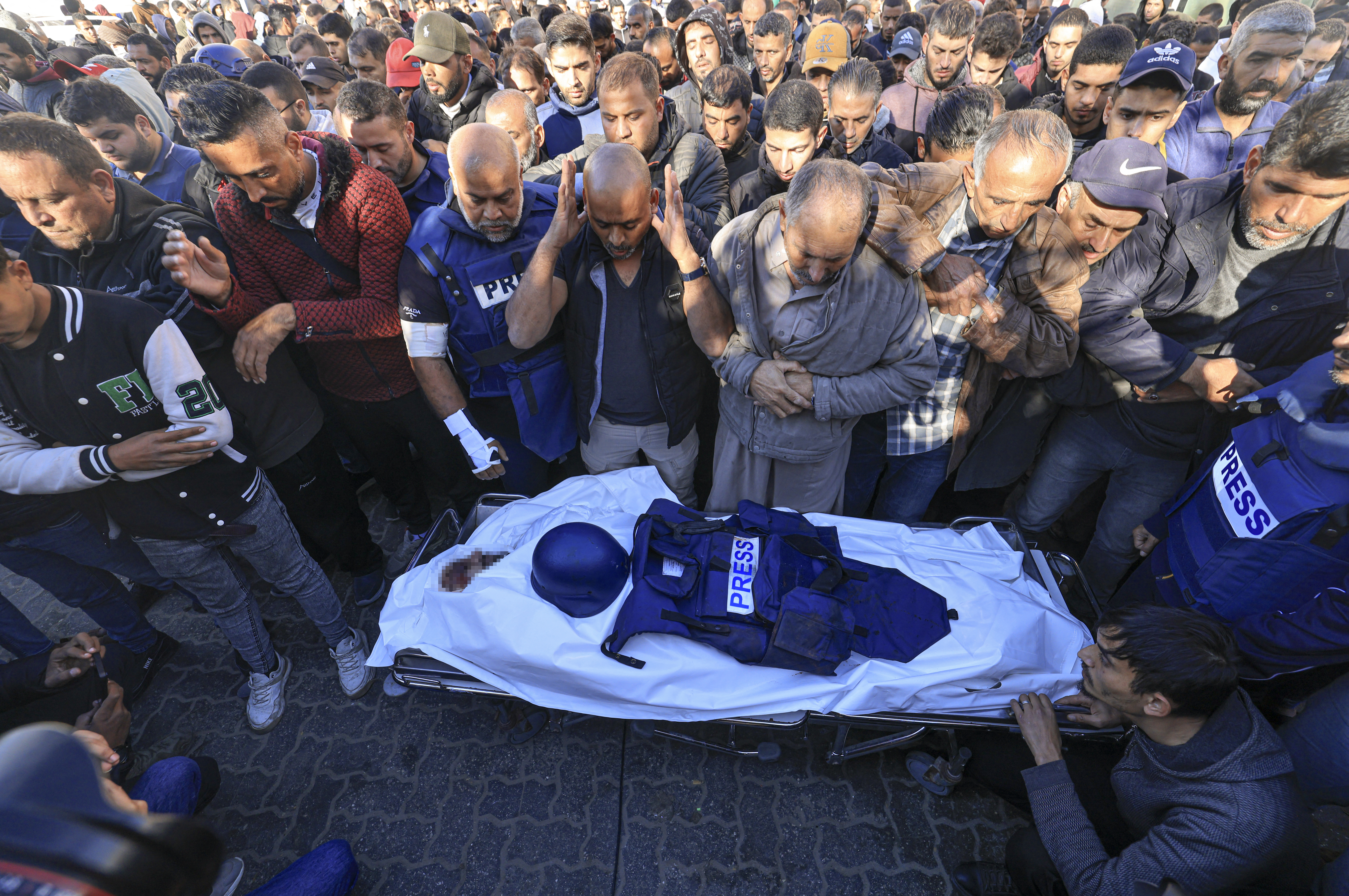
Every year on May 3, UNESCO commemorates World Press Freedom Day.
It is being marked today at a particularly perilous time for journalists globally, with Israel’s war on Gaza becoming the deadliest conflict for journalists and media workers.
“When we lose a journalist, we lose our eyes and ears to the outside world. We lose a voice for the voiceless,” Volker Turk, UN High Commissioner for Human Rights said in a statement today.
“World Press Freedom Day was established to celebrate the value of truth and to protect the people who work courageously to uncover it.”
Deadliest period for journalists in Gaza
More than 100 journalists and media workers, the vast majority Palestinian, have been killed in the first seven months of war in Gaza, according to the Committee to Protect Journalists (CPJ) and the International Federation of Journalists (IFJ).
Gaza’s media office has the number at more than 140 killed, which averages to five journalists killed every week since October 7.
Since the start of the war, at least 34,596 Palestinians have been killed and 77,816 others injured in Gaza. More than 8,000 others are missing, buried under the rubble.
“Gaza’s reporters must be protected, those who wish must be evacuated, and Gaza’s gates must be opened to international media.” Jonathan Dagher, Head of RSF’s Middle East desk said in a statement in April.
“The few reporters who have been able to leave bear witness to the same terrifying reality of journalists being attacked, injured and killed … Palestinian journalism must be protected as a matter of urgency.”
Al Jazeera journalists killed and injured in Gaza
On January 7, Hamza Dahdouh, the eldest son of Al Jazeera’s Gaza bureau chief, Wael Dahdouh, was killed by an Israeli missile in Khan Younis. Hamza, who was a journalist like his father, was in a vehicle near al-Mawasi, a supposedly safe area that Israel designated, with another journalist, Mustafa Thuraya, who was also killed in the attack.
According to reports from Al Jazeera correspondents, Hamza and Mustafa’s vehicle was targeted as they were trying to interview civilians displaced by previous bombings.

The Al Jazeera Media Network strongly condemned the attack, adding: “The assassination of Mustafa and Hamza … whilst they were on their way to carry out their duty in the Gaza Strip, reaffirms the need to take immediate necessary legal measures against the occupation forces to ensure that there is no impunity.”

On December 15, 2023, Al Jazeera cameraman Samer Abudaqa was hit in an Israeli drone attack that also injured Wael Dahdouh, while they were reporting at Farhana school in Khan Younis, southern Gaza.
Abudaqa bled to death for more than four hours as emergency workers were unable to reach him because the Israeli army would not let them.
Abudaqa was the 13th Al Jazeera journalist killed on duty since the launch of the network in 1996.

In 2022, Palestinian reporter Shireen Abu Akleh, renowned across the Arab world, was killed by the Israeli forces in the occupied West Bank while reporting.
Al Jazeera has called on the international community to hold Israel accountable for attacks on reporters.
How many journalists have been killed around the world in 2024?
So far in 2024, 25 journalists and media workers have been killed, according to the CPJ.
At least 20 of those killed were in Palestine. While two were killed in Colombia, and one each in Pakistan, Sudan and Myanmar.
In 2023, more than three-quarters of the 99 journalists and media workers killed worldwide died in the Israel-Gaza war, the majority of them Palestinians killed in Israeli attacks on Gaza.
“Since the Israel-Gaza war began, journalists have been paying the highest price – their lives – to defend our right to the truth. Each time a journalist dies or is injured, we lose a fragment of that truth,” CPJ programme director Carlos Martinez de la Serna said.

Where is press freedom most restricted?
To measure the pulse of press freedom around the globe, the media watchdog Reporters Without Borders (RSF) publishes an annual index. It ranks the political, economic, and sociocultural context as well as the legal framework and security of the press in 180 countries and territories.
According to the 2024 World Press Freedom Index, Eritrea has the worst press freedom, followed by Syria, Afghanistan, North Korea and Iran.
According to RSF, all independent media have been banned in Eritrea since the transition to a dictatorship in September 2001. The media is directly controlled by the Ministry of Information – a news agency, a few publications and Eri TV.

How many journalists are imprisoned?
As of December 1, 2023, 320 journalists and media workers were imprisoned, according to CPJ.
China (44 behind bars), Myanmar (43), Belarus (28), Russia (22) and Vietnam (19) rank as having the highest number of imprisoned journalists.
China has long been “one of the world’s worst jailers of journalists”, according to the CPJ.
Of the 44 journalists imprisoned in China, nearly half are Uighurs, where they have accused Beijing of crimes against humanity for its mass detentions and harsh repression of the region’s mostly-Muslim ethnic groups.








